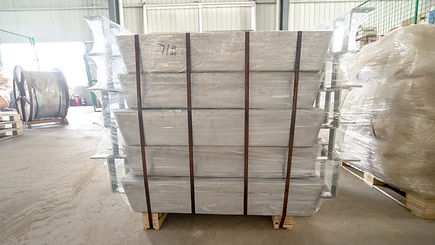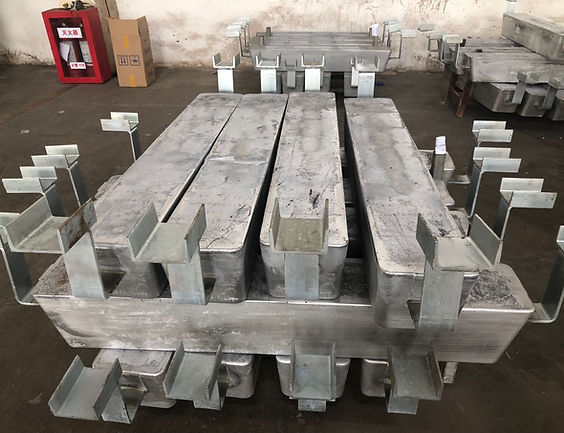
Aluminum Alloy Sacrificial Anodes
Aluminum alloy sacrificial anodes are utilized for cathodic protection against metal corrosion in marine environments. They find application in ships, machinery, marine engineering, port facilities, pipelines in marine sediments, buried steel structures, cables, and other facilities submerged in seawater.
The scope of application for aluminum alloy sacrificial anodes includes ships, machinery, marine engineering, port facilities, pipelines in marine sediments, buried steel structures, and cables submerged in seawater. They provide cathodic protection against metal corrosion. We offer a comprehensive range of cathodic protection products, including sacrificial anodes for cathodic protection, impressed current cathodic protection products, aluminum thermal welding products, and other corrosion protection-related items.

Aluminum Alloy
Sacrificial Anodes
The scope of application for aluminum alloy sacrificial anodes includes cathodic protection for metal corrosion in seawater environments, such as ships, machinery, marine engineering, and harbor facilities. This extends to cathodic protection for pipelines in marine mud, underground steel structures, cables, and other facilities. We offer a complete range of cathodic protection products, including sacrificial anode cathodic protection series, impressed current cathodic protection series, aluminum thermal welding series, and other corrosion protection-related products
Aluminum Bracelet Anode
Cuff-style aluminum alloy sacrificial anodes are primarily used for corrosion protection of underwater pipelines. The cuff-style anode consists of a semi-circular cuff-type anode body (including a semi-circular ring anode body and an iron core), resembling a cuff that wraps around the underwater pipeline. The iron core passes through the semi-circular ring anode body, protruding from both ends of the semi-circular ring anode body.
The key to the production of the product lies in the design and manufacture of the mold structure. Following the casting process, a thickness of 50mm, a length ranging from 350mm to 500mm, and a weight including the steel core ranging from 97.6kg to 221kg are achieved through a semi-shell molding process using male and female molds. After casting, both upper and lower halves of each anode block require a brush-applied epoxy resin shielding layer with a thickness greater than 300μm. Production standards are in accordance with DNVGL-RP-F103 2016 and ISO 15589-2:2004.
MACH Taiwan utilizes an exclusive casting system process to control the gating system, ensuring sequential solidification of the molten metal. This reduces casting defects such as porosity, shrinkage, and cold shuts. The interdendritic corrosion is minimized, dendrite segregation is reduced, and product surface quality is improved. This approach enhances electrochemical performance, shortens production cycles, significantly reduces production costs, improves efficiency, and enhances overall competitiveness.
Upon completion, the finished product can be accompanied by self-inspection reports on chemical composition, certificates in both Chinese and English for major raw materials (including aluminum ingots, zinc ingots, iron cores, etc.). The process also provides inspection records (weight, dimensions, surface condition, cracks, etc.) for a specific number of items, third-party testing reports on chemical composition and electrochemical performance from China Shipbuilding Industry Corporation (Qingdao Material Corrosion and Protection Testing Station), packaging that meets customer requirements, destructive sectioning inspection reports, and certification from Bureau Veritas (French maritime classification society).

